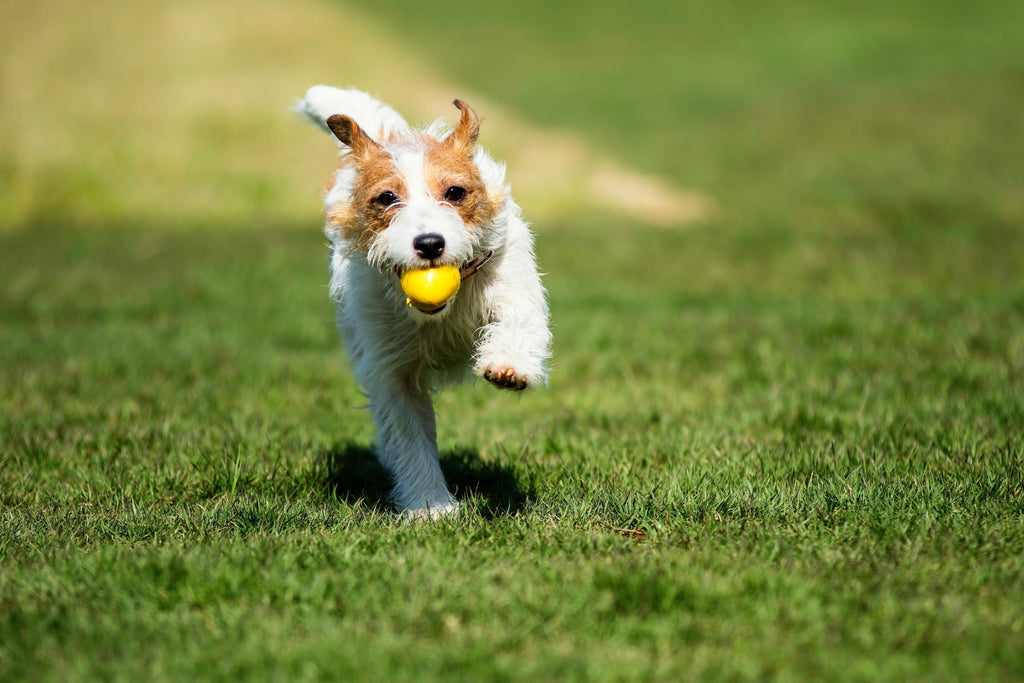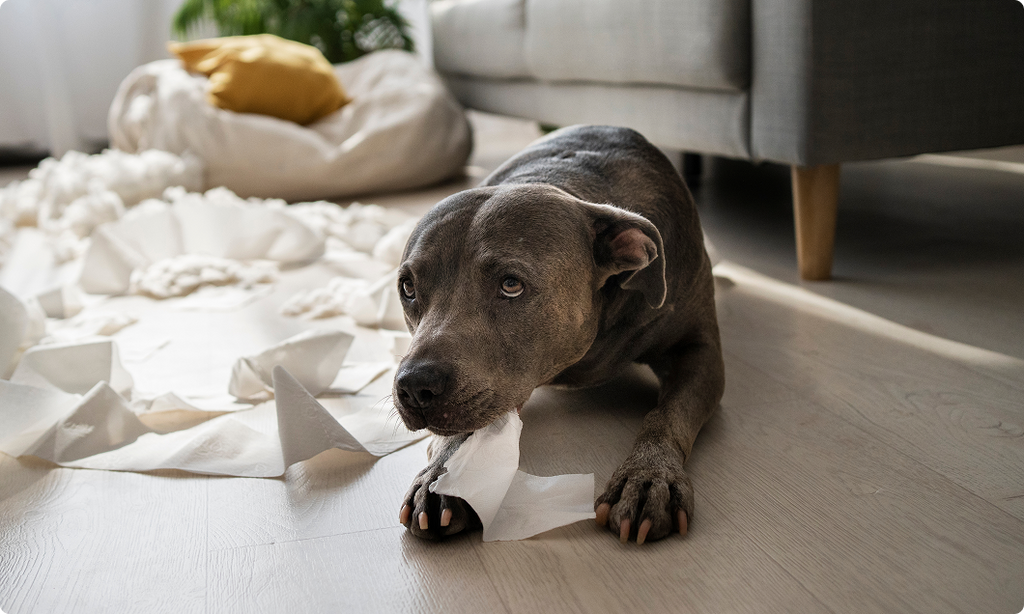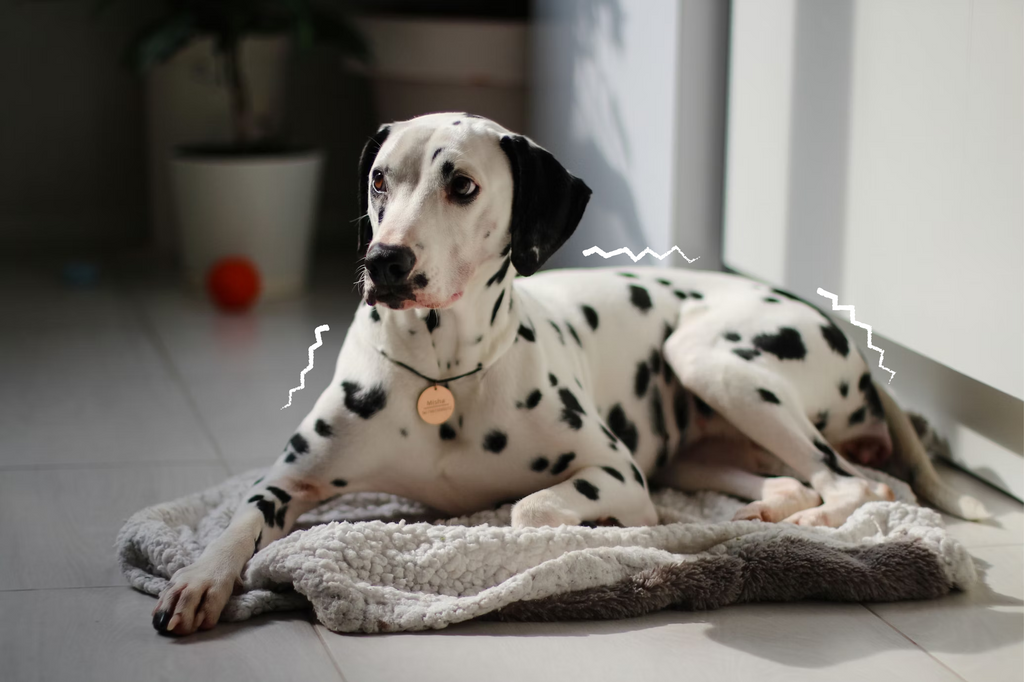Dog-Gone Treats: Why Does My Dog Hide Treats?

Have you noticed your dog taking their doggy treats and stashing them in out-of-the-way places? There is a reason. Our unique best friends are often guided by their canine instincts. This article will dive into why your dog hides their treats in the corners, in their bed, or beneath a pile of blankets. Uncover why your dog hides their treats and how you can prevent it if you choose.
Why do dogs bury treats or hide them?
Many dogs have a habit–good or bad–of hiding treats that they are given. Many dog parents wonder why they do this and some think it might be a type of bad behaviour. Well, if your dog is hiding treats that you give them, unless it is excessive, this isn’t anything that you have to worry about.
1. It’s all part of being a dog
Some aspects of our dogs are as natural as a wagging tail. Understanding why your dog hides treats is like explaining why they greet their owners at the door. It is a behaviour that was bred into dogs when they were pack animals.
“Most of the time when dogs hide things, they do so because they have an instinct to hoard or guard their food and possessions” according to Mary Kearl with the AKC [1].
When packs brought down large game, the most aggressive dogs would get the most food. Some of them learned to hide some of the food so that they could feast on it at their leisure, later when they needed a meal. So this trait was passed down from generation to generation.
2. They want to save it for later
In most cases, they have a full tummy and are saving it for later. They will come back to it when they get hungry. So just don’t give them as many treats.
Sometimes, they like the attention that they are getting and hide the treat so that they can get you to give them another. Instead, you can just play with them a little more. No self-respecting dog ever turns down attention.
If they were raised with a lot of other dogs, they might not feel secure with their food. So to combat this fear, they might choose to hide their food for later when they can eat it without worrying about another dog taking it away from them
3. It isn’t really a problem
So if it isn’t broken, don’t try to fix it. You don’t need to worry about your dog hiding treats if it is within reasonable limits. If they do it excessively, there could be other problems that require your attention.
They could be:
- In need of a visit to the vet
- Suffering from stress and anxiety
- Dealing with problems caused by the way they were raised or kept when young
Your dog’s special hiding places for their treats

Dogs hide treats to keep them secure and protected from others. Hiding treats is a deeply ingrained instinct in traditional pack animals and is a way to protect their food source from real or imagined threats [2].
Inside and out, your dog may want to hide treats where other dogs won’t find it. Makes sense, so don’t be surprised where you find some of these treasured treats. Outside, there are many places to bury the tempting morsels, but inside, that is a different matter.
Why does my dog hide his treats in my bed?
Well, most dogs are familiar with beds, and don’t forget, they can’t exactly dig a hole in your floor to hide their treat. It is easy for them to pull back the bedspread and drop the treat there or hide it under one of the pillows.
Why do dogs hide bones in corners and out of the way places?
They have limited places to hide things, so in the corner under an end table, between the couch cushions or under the sofa are all good places. They want to make sure that they are the only canine that can find it, so they will be very creative in finding suitable spots.
What can I do to prevent my dog from hoarding treats?
Sometimes treat hoarding isn’t a problem, but other times it is. What can you do to change the behaviour? Mary Kearl explains, “Hiding isn’t always a behaviour issue. The habit could be a sign of a health problem, being overfed, or boredom” [1].
1. If it isn’t a problem, don’t do anything
Before you do anything, ask yourself if it is really a problem. If it isn’t, then don’t worry about it. You can do much to change instinctual characteristics, so you might be fighting a losing battle. So you might want to first look at your behaviour.
If you get a new puppy, start training them when they are young–limit their access to treats and give them plenty of attention so that they equate treats with affection as they grow.
2. Don’t overfeed them
If your dog isn’t feeling hungry, they might not feel like downing the treat you just gave them. Instead, try a different strategy. Give them fewer treats to start with. Not only will this help prevent treat hoarding, it will also lower their calorie intake and help them from gaining weight.
3. Give them treats when they aren’t hungry
You can also give them treats after a nice, long walk or a good session of fetch in the backyard when they have worked up an appetite. Or, try giving it to them before or between meals when they might be a little more hungry.
Don’t reward them too often with treats. They might start begging for treats just to get attention. Make sure that you satisfy their social needs by petting and scratching them, rubbing their ears, etc. They will get used to the attention and they won’t beg for treats.
Play with your dog often, give them proper toys and treats so that they are satisfied but not overly fed. Giving them plenty of physically and intellectually stimulating activities will help prevent hiding their toys and bones.
4. Control where they get treats
They can’t hide their treats if there is no place to hide them. Try giving them a treat in the kitchen, then watch them eat it. Keep them engaged so that they aren’t likely to wander off and hide their treat.
If there are other dogs in the house, especially dogs that are aggressive about food, get the dog alone, and then give them the treat so that they don’t have to worry about it being taken from them. This is especially effective with bones and treats that require a lot of time and chewing to consume.
But try to avoid…
Since hiding treats is an instinctual behaviour, you should avoid punishing your dog. Never:
- Punish them
- Swat at them
- Yell at them
A nice, firm “No” or “Naughty” should do the trick. But make sure that you are consistent–doing it sometimes and not others will just confuse your dog.
Instead, you can:
- Give them a treat when they are a little hungry, like between meals or after a nice walk
- Give them treats where there is no place to hide them
- Give them treats when there is no competition from other dogs
- Give them fewer treats
So if your dog takes a treat from you, then runs off to hide it, don’t worry too much unless it becomes excessive, then it might be time to see if there is a medical problem requiring a trip to your vet, or the help of a trainer and can work with your dog’s behaviour.
Otherwise, with a few changes in the way you reward your dog or by giving it a little more attention, you can reduce the hoarding to a manageable level, and you and your doggo can live happily ever after.
Treats that are too good to hide

Sometimes it takes the right treat to convince your dog that their hiding spot can hold off. With high-value, aromatic treats, you can bet your dog will dive right in. Want to feed your doggo’s natural desire to hide treats? Long-lasting treats like shark cartilage are ideal for a treat your dog will want to savour for later.
Resources:
[1] Why Does My Dog Hide Things? Reasons Why Your Dog Is Hiding Items (akc.org)
[2] Why Does My Dog Hide Treats- Is It Normal Behavior? – FAQPets




